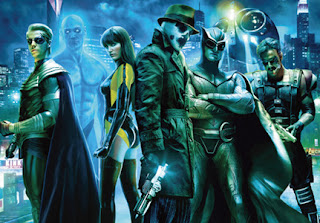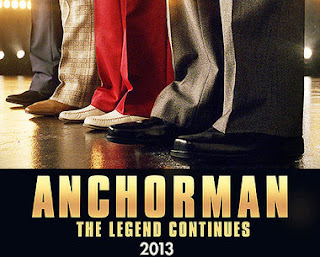Acting in the spirit of The Dark Knight Rises coming out in a week, we thought we would take a look at some groundbreaking comic book movies. These are the ones that wanted to separate themselves from the crowd, reach for something different, to try and do something that had never been done before.
And the list can include any comic book adaptation, not just those in the recent onslaught.
This is in no way a ranking of the movies' quality, but instead a list showing how these fantastic five paved the ground for some different ways to think about comics-on-film. They are at the frontier, pushing the limits to get at something a little better.
In an age where every superhero seems to be getting his or her shot at 24 frames-per-second, (deserved or not) it's good to know that they aren't all trying to give us the same thing.
 5. BATMAN (1989)
5. BATMAN (1989)
Close to the dawn of all comic-book movies, Tim Burton’s Batman is probably the most singular
addition to this list. With Burton’s adaptation, we see a world created in and
of itself for film. In all honesty, the Gotham of the comic books doesn’t really
match up with Burton’s, but for god knows what reasons, we really don’t care. It’s
thrilling to be thrown into such a wacky world for two hours.
What’s strange about the timing of this release is that when
Burton was developing his version of Batman, writers like Frank Miller and Alan
Moore and Grant Morrison were developing their versions of superheroes – two
totally different views of the genre. It seems like Burton took no influence
whatsoever from the then recent additions to the superhero library. (his infamous quote "I've never read a comic book in my life" speaks to this) In reality,
it took 15 – 20 years before filmmakers were really starting to be influenced
by the designs of these graphic novels.
So, of course, this is not in any shape or form a faithful
adaptation of the original Batman comics. Far from it. What Burton really creates is an
opera. A grandiose exaggeration of all things gothic. And while this specific
style did not continue in many comic-book movies, what it did give way to was
the idea that a whole new world could be created for superheroes to play around
in. It doesn’t have to be grounded so close to reality, especially since the
comics aren’t. Without this, I don’t know if we would have movies like 300, Hellboy, Spawn, or…
 4. SIN CITY (2005)
4. SIN CITY (2005)
While Burton created his own unique world for Batman, Robert Rodriguez tried to not change a single thing when creating his unbelievably faithful adaptation of the Sin City graphic novels. To even call it a adaptation sounds a bit weird since the film is so close to its source material. A better word would be "translation." With it's multi-story approach, ensemble list of characters, insane stark visuals and gruesome violence, this was no easy feat.
Sin City, in the book or film form, is unlike anything either medium has given us. The author (and co-director) Frank Miller worked with Rodriguez in creating this black and white (and some colour) noir feast for the screen by taking a brand new approach: change the way the film is made to suit the novels. It opened the doors on what was possible for comic book adaptations. Only this time, showing what can be done not in adjusting, but in terms of being faithful. Almost to a fault. All of a sudden, any piece of material seemed possible for the screen. Even if that material is deemed "un-filmable."
However, it's biggest advancement was its use of digital photography and technology. This broke new ground in what can be done. The very frames of the movie, for the first time, seemed as if you were watching the characters from the books move. The shots matched the frames not just in composition but also in its artistic design. This paved way for the free screen look. (See: 300) Where most studios push for things to work on an all ages level, Sin City seemed to say "Screw it. Let's do it shot for shot, line for line and make the camera work for us."
 3. X-MEN (2000)
3. X-MEN (2000)
X-Men pretty much paved the way not only for comic-book
movies, but also a large part of the 2000’s filmmaking sensibility. X-Men took
a highly stylized source material and tried to shed off all the pomp and
circumstance to render it in gritty realism. For the first half of the movie,
director Bryan Singer succeeds, but then falls into a more traditional
depiction of good-guy versus bad-guy. The movie is still amazing (perhaps the
best of the series) but it’s the first half that really left an impression on
filmmakers.
The big question before X-Men came out was how could they
possibly show Wolverine in yellow tights, growling like an animal, and still
make him watchable? Well Singer found the perfect way. Instead of trying to
copy the source material directly, like in Sin
City, he developed a new made-for-film version.
The introduction of
Singer’s Wolverine is probably one of my favorite introductions of any
superhero to-date. Seeing him in a bar surrounded by drunks and smoke and
steel, even if you already know who the character is, marks the moment in film
when we all realized there was another way, a much harsher way, to adapt
comics. They don’t have to be all wearing flamboyant costumes and say
catch-phrases in order to have a faithful, and good, adaptation.
 2. THE DARK KNIGHT (2008)
2. THE DARK KNIGHT (2008)
Without X-Men to start us off, we probably would never have
gotten a movie like The Dark Knight. For the first time, critics and audience were floored by how un-comic book a comic book movie could be. At times it moves beyond any semblance of what we think a
comic book movie should be, and while it stays close to the good-versus-evil
dilemma, Christopher Nolan goes so far beyond any adaptation that came before it,
he has come close to creating a whole new way of seeing these stories on film.
Even Batman Begins feels like a comic book
movie: the introduction and growth of a superhero, the love interest, the
hidden identity, the sepia colour tones, etc. And while most of these aspects are still present in The Dark Knight, (blue replaces sepia) its scope expands far
beyond its predecessor. It became a crime saga, with a hero and a villain that dress up.
What’s even more impressive is how these are original
stories. Nolan does not literally translate a source material like with Sin City, but instead takes the
influence from years of Batman’s mythology, shifts and shapes them to create his own. The
opening bank robbery, or the boat dilemma, or the magic trick are scenes Batman
fans get to see for the first time. And this ability to create all things
original allowed for Heath Ledger’s Joker: perhaps the quintessential performance
of any realistic comic book villain.
It goes without saying that Nolan’s Batman
is probably the best film-depiction of the caped crusader, and we would be hard pressed
to imagine a better one arriving in the years to come. We wait with eager anticipation if Nolan can in fact top himself with The Dark Knight Rises, but the real accomplishment will always be injecting the comic book realism and raising the bar to levels that will be hard to match.
1. WATCHMEN (2009)

This is the one that really did it all: it creates a new
world, plays out like an opera at points and a gritty drama at others, dives
deep into the psyches of superheroes,
and still remains quite faithful to its source material. Watchmen is at number one on this list
because there is really no other movie like it.
No, it might not be better than The Dark Knight, but that’s not what we’re talking about here.
Other than maybe Batman, Watchmen exists as one of the most
unique superhero movies of all time.
The sheer length of the film separates it right off the bat.
With a director’s cut of 186 min and an ultimate cut of 215 min, the movie,
like the graphic novel, is a whopper and dense. But in all that extra time, a world is
presented to us like no other: a world of multiple superheroes, powerless
superheroes, a god-like creature, retired heroes and villains, death and sex
and brutality and altogether, a world of unfettered madness.
Watchmen is a comic
universe lacking in good guys and bad guys. There are no heroes and there are
no villains in this movie – there are only people, all lost in a moral haze. The
dramatic questions that arise for the audience are not things like “will he
catch the wrong-doer” or “will they find out who he really is”, but rather are
questions the audience asks themselves about what the psychological ramifications are of
being a hero in a dying world. Watchmen
is a dark story without any sort of moral compass to guide you – even in the
end you don’t know whether to clap or cry.
The saddest part of this movie is that, much like the
graphic novel that birthed it, it will probably only be fully appreciated many
many years from now. It certainly has mixed reviews by critics and audiences
alike, but for us, despite its problems, Watchmen
went where no other comic book movie had gone before, or has gone since, and deserves the place at the top of this list.






























